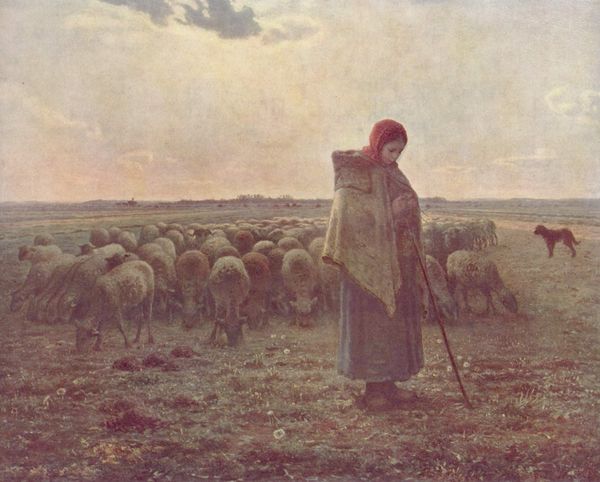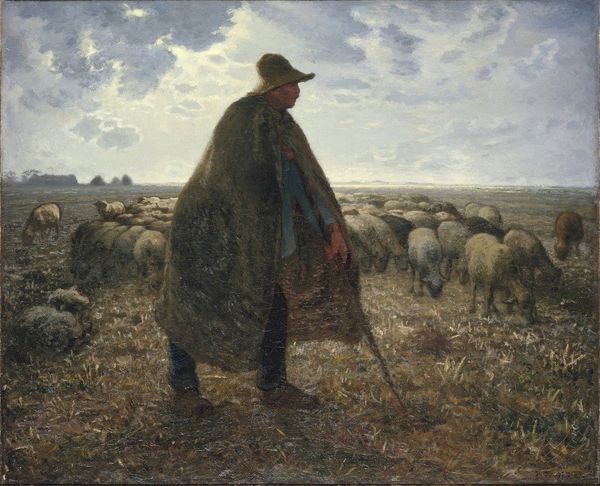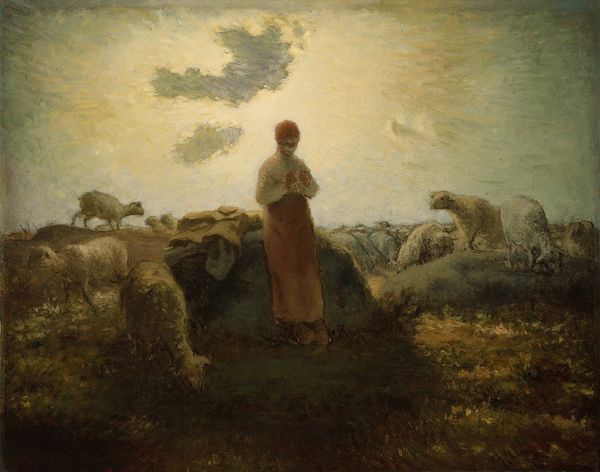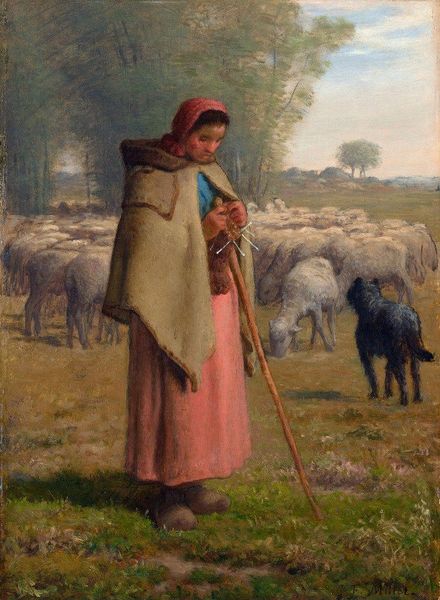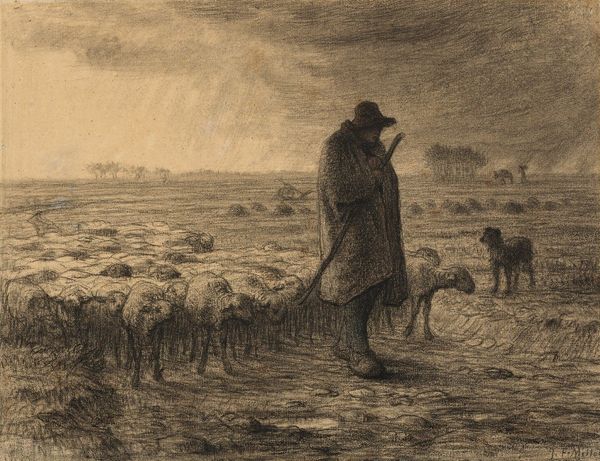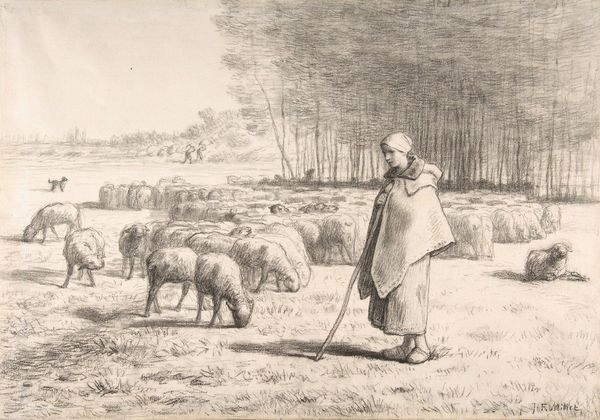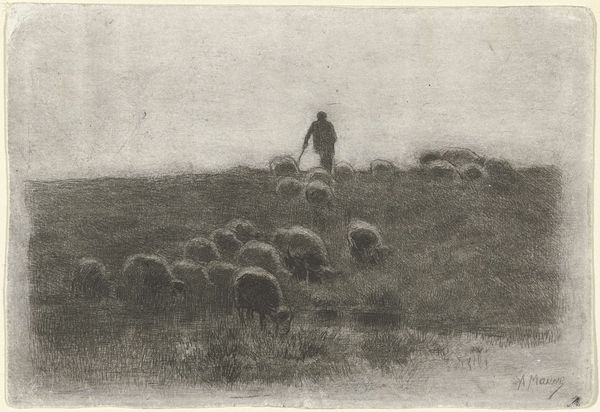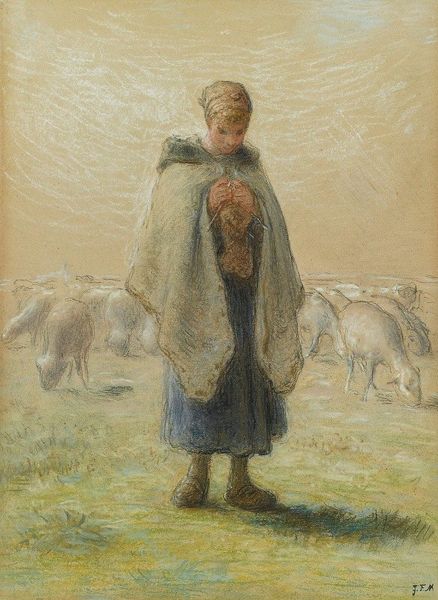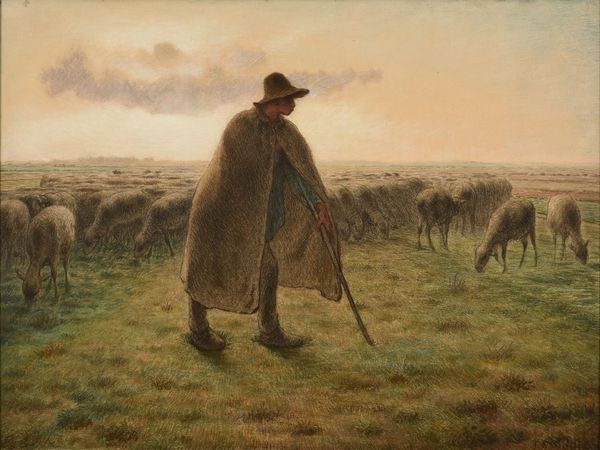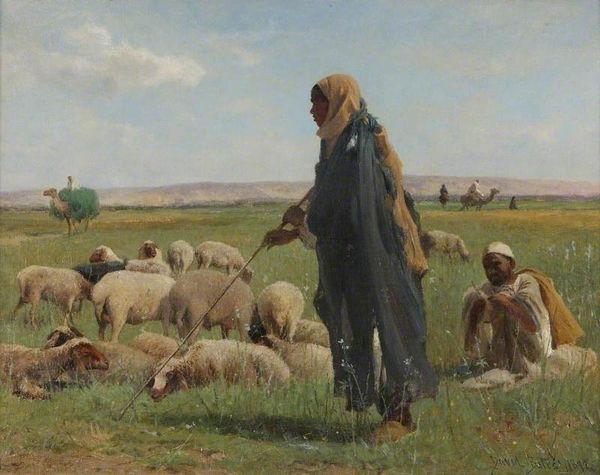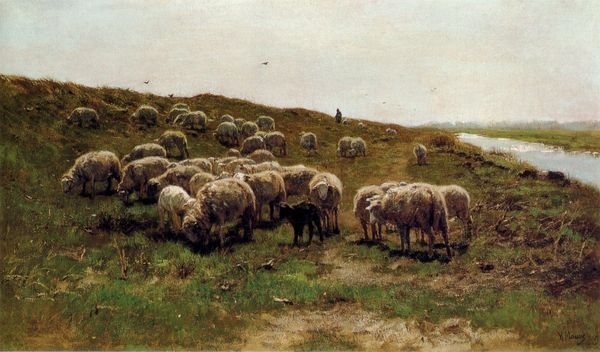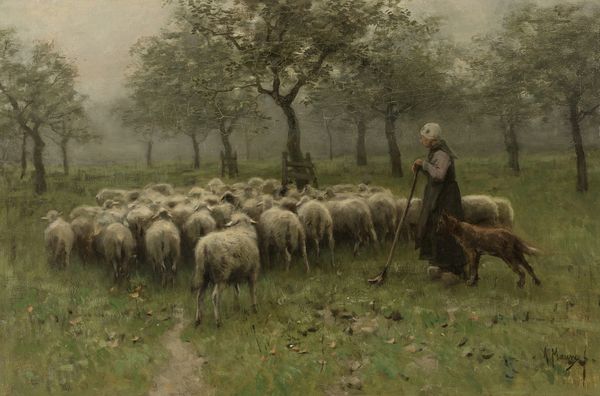
Copyright: Public Domain: Artvee
Jean-François Millet made this artwork in an unknown year, using pastel on paper. Looking closely, you can see the dry, velvety texture achieved by this medium. Pastels, made of pure pigment mixed with a binder, allowed Millet to build up layers of colour, creating subtle gradations of light and shadow. Notice how the marks, the physical traces of the artist's hand, are still visible, especially in the rendering of the shepherdess's cloak. The texture of the pastel creates a sense of the rough, woolen fabric. What makes Millet's image especially powerful is its connection to rural life and labor. The artwork's appeal lies in its ability to ennoble the everyday. Through the materials and techniques employed, Millet elevates the shepherdess and her flock, inviting us to appreciate the beauty and dignity inherent in their humble existence. This reminds us that the choice of materials and techniques is never neutral, but always contributes to the meaning of the artwork.
Comments
No comments
Be the first to comment and join the conversation on the ultimate creative platform.
